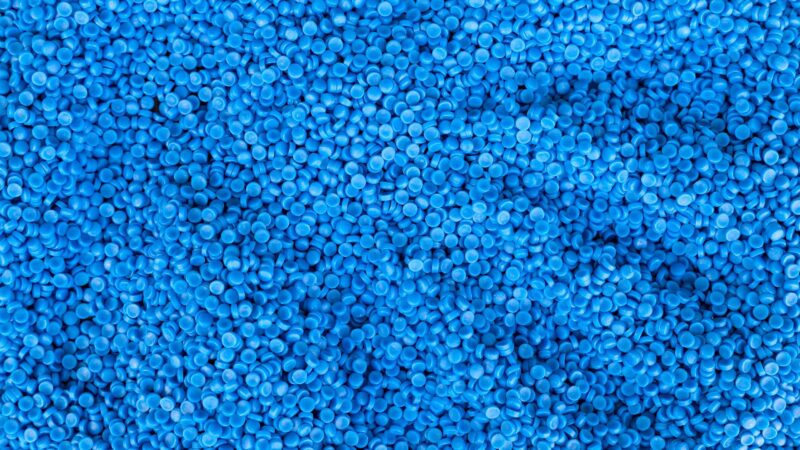Introduction to Fluid Bed Processor:
Fluid bed processor is a versatile and widely used equipment in the pharmaceutical, food, chemical, and other industries for various processes such as drying, granulation, coating, and agglomeration. The fundamental principle behind fluid bed processing is the suspension of solid particles in a gas or air stream, creating a fluid-like behavior that facilitates efficient heat and mass transfer.
Key Components and Operation:
- Bed Chamber:
- The heart of a fluid bed processor is the bed chamber, typically a vertical vessel with perforated plates at the bottom.
- Solid particles are introduced into this chamber and fluidized by passing a stream of air or gas from below.
- Fluidization:
- Fluidization occurs when the upward velocity of the gas is sufficient to overcome the gravitational forces acting on the particles, causing them to behave like a fluid.
- This fluidized state enhances mixing and promotes uniform contact between the particles and the fluidizing medium.
- Heating and Drying:
- Fluid bed processor is widely used for drying applications. By passing heated air through the fluidized bed, moisture is rapidly evaporated from the particles, leading to efficient and uniform drying.
- Granulation:
- Granulation involves the agglomeration of fine particles into larger, more uniform granules.
- In fluid bed processor, this is achieved by spraying a liquid binder onto the fluidized bed, causing particles to adhere and form granules.
- Coating:
- Fluid bed processors is also employed for coating solid particles with a thin layer of a coating material.
- The coating material is typically applied in a liquid form, and the fluidized bed ensures even distribution of the coating over the particles.
Advantages of Fluid Bed Processor:
- Uniformity:
- The fluidized state ensures uniform contact between particles and the fluidizing medium, leading to consistent results.
- Efficient Heat Transfer:
- The high surface area and good mixing in fluid beds result in efficient heat transfer, making them ideal for drying and other thermal processes.
- Flexibility:
- Fluid bed processor is versatile and can be easily adapted for different processes such as drying, granulation, and coating.
- Reduced Processing Time:
- The fluidized bed environment allows for rapid heat and mass transfer, reducing processing times compared to other methods.
Types of Fluid Bed Processor
Fluid bed processor comes in different types, each designed to cater to specific industrial needs and processes. The selection of a particular type depends on the intended application, the characteristics of the materials involved, and the desired outcomes. Here are some common types of fluid bed processors:
Fluid bed processors come in different types, each designed to cater to specific industrial needs and processes. The selection of a particular type depends on the intended application, the characteristics of the materials involved, and the desired outcomes. Here are some common types of fluid bed processors:
- Batch Fluid Bed Processor:
- In batch fluid bed processor, a discrete quantity of material is processed at a time within a closed vessel.
- This type is suitable for applications where precise control over the process parameters and thorough mixing are essential.
- Continuous Fluid Bed Processor:
- Continuous fluid bed processor operates continuously, allowing a continuous feed of material into the fluidized bed while maintaining a constant product discharge.
- These are often used in large-scale production processes where a continuous and uniform output is required.
- Top Spray Fluid Bed Processor:
- Top spray fluid bed processor are commonly used for granulation and coating applications.
- The material to be processed is introduced into the fluidized bed from above, and the liquid binder or coating material is sprayed onto the fluidized particles.
- Bottom Spray Fluid Bed Processor:
- In bottom spray fluid bed processor, the material is fluidized, and the liquid binder or coating material is sprayed from below the fluidized bed.
- This type is chosen when specific coating requirements or the nature of the material make top spraying less effective.
- Wurster Fluid Bed Processor:
- Wurster fluid bed processor are designed for coating particles uniformly.
- The particles are fluidized, and the coating material is sprayed onto them while a draft tube within the bed allows the particles to move upward and downward, ensuring even coating.
- Multi-Functional Fluid Bed Processor:
- These are designed to perform multiple functions within the same equipment. For example, a unit might be capable of drying, granulating, and coating in a single processing cycle.
- Multi-functional fluid bed processor offers flexibility and efficiency by minimizing the need for transferring materials between different machines.
- Vibratory Fluid Bed Processor:
- Vibratory fluid bed processor use vibrations to enhance fluidization, resulting in improved mixing and heat transfer.
- This type is suitable for heat-sensitive materials or processes requiring gentle handling.
- Static Fluid Bed Processor:
- Static fluid bed processor is characterized by a stationary bed without any moving parts.
- While less common, static fluid beds are used for specific applications where minimal agitation is desired.
Choosing the right type of fluid bed processor is crucial to achieving optimal results in terms of product quality, process efficiency, and cost-effectiveness. The selection should take into account the specific requirements of the intended application and the characteristics of the materials being processed.
Operating Principles of Fluid Bed Processor:
Fluid bed processor operates based on the principle of fluidization, creating a dynamic and fluid-like state within a bed of solid particles. These processors are utilized for various applications, including drying, granulation, coating, and agglomeration. The key operating principles are as follows:
- Fluidization:
- The fundamental principle is fluidization, where a solid particulate material is transformed into a fluid-like state by passing a gas or air stream through it.
- As the velocity of the gas increases, it overcomes the gravitational forces acting on the particles, causing them to lift and become suspended in the airstream.
- Bed Chamber:
- Fluid bed processors consist of a bed chamber, typically a vertical vessel with perforated plates or a porous surface at the bottom.
- The solid particles to be processed are placed in this chamber.
- Gas Distribution:
- A controlled flow of air or gas is introduced into the bed chamber from below.
- The gas distribution ensures uniform fluidization of the particles throughout the bed.
- Minimum Fluidization Velocity:
- Each type of material has a minimum fluidization velocity, which is the gas velocity required to initiate fluidization.
- Below this velocity, the particles settle, and above it, they become suspended in the gas stream.
- Heat and Mass Transfer:
- Fluidization enhances heat and mass transfer within the bed. This is crucial for processes like drying, where rapid and uniform moisture removal is desired.
- The high surface area and good mixing in fluid beds contribute to efficient heat exchange between the fluidizing medium and the particles.
- Drying:
- In drying applications, heated air is passed through the fluidized bed, leading to the rapid evaporation of moisture from the particles.
- The fluidized state ensures that all particles are exposed to the heated air, promoting uniform drying.
- Granulation and Coating:
- For granulation, a liquid binder is typically sprayed onto the fluidized particles, leading to the formation of granules as the particles adhere to each other.
- In coating applications, a coating material is applied to the particles, creating a thin and uniform coating layer.
- Controlled Processing Conditions:
- The key to effective operation is maintaining control over various parameters, including gas flow rate, inlet air temperature, and the rate of material introduction.
- Precise control ensures the reproducibility of the process and the desired quality of the final product.
- Product Discharge:
- Once the processing is complete, the fluidized particles are usually discharged from the bed chamber. The method of discharge depends on the specific design of the fluid bed processor.
Fluid bed processors operate on the principle of fluidization, creating a dynamic environment that facilitates efficient heat and mass transfer for various processing applications. The ability to control operating parameters is crucial for achieving consistent and desired outcomes in terms of product quality and processing efficiency.
Components of a Fluid Bed Processor:
Fluid bed processors are complex machines designed to perform various functions such as drying, granulation, coating, and agglomeration. The efficiency and effectiveness of these processes rely on the components of the fluid bed processor working together seamlessly. Here are the key components:
- Bed Chamber:
- The bed chamber is the main vessel where the fluidization of particles takes place.
- It is typically a vertical container with a porous bottom, usually made of perforated plates or a porous membrane to allow the passage of gas.
- Air Distribution System:
- The air distribution system is responsible for delivering the gas or air into the bed chamber.
- It includes a fan or blower, ducts, and a distribution plate to ensure even fluidization of particles throughout the bed.
- Filter System:
- A filter system is often incorporated to ensure that the air leaving the fluid bed processor is free from particles.
- This is essential in processes like coating, where particle contamination in the exhaust air can affect product quality.
- Heating System:
- For processes such as drying, a heating system is integrated to supply warm air to the fluidized bed.
- The heating system may involve electric heaters, steam heat exchangers, or other methods to control the temperature of the process air.
- Spraying System:
- In fluid bed processors used for granulation and coating, a spraying system is employed to apply liquid binders, coating materials, or active ingredients onto the fluidized particles.
- This system typically includes spray nozzles, a pump, and a liquid delivery system.
- Draft Tube (Wurster Column):
- In Wurster fluid bed processors used for coating applications, a draft tube or Wurster column is present within the bed chamber.
- The draft tube allows particles to move upward and downward, ensuring even coating of the particles.
- Control System:
- A sophisticated control system is crucial for maintaining and regulating various parameters such as temperature, air flow rate, and material feed rate.
- This system ensures the reproducibility and consistency of the process.
- Exhaust System:
- An exhaust system is responsible for removing the processed air from the fluid bed processor.
- Depending on the application, the exhaust may pass through filters or other treatments to comply with environmental regulations.
- Product Discharge System:
- Once processing is complete, a system for product discharge is employed to remove the processed material from the bed chamber.
- Different designs may include discharge valves, chutes, or other mechanisms.
- Instrumentation and Sensors:
- Various sensors and instruments are integrated to monitor and control parameters such as temperature, pressure, and humidity within the fluid bed processor.
- These instruments contribute to the precision and reliability of the processing.
- Inlet and Outlet Ports:
- Inlet ports are used for introducing raw materials into the fluid bed, while outlet ports facilitate the discharge of processed materials.
Understanding the functionality and interaction of these components is crucial for optimizing the performance of a fluid bed processor and achieving the desired outcomes in various processing applications.
Batch vs. Continuous Fluid Bed Processing:
Fluid bed processing is a versatile technique used in various industries for applications like drying, granulation, coating, and agglomeration. The choice between batch and continuous fluid bed processing depends on the specific requirements of the manufacturing process. Here’s a comparison of the two approaches:
Batch Fluid Bed Processing:
- Processing Method:
- In batch processing, a fixed quantity of material is loaded into the fluid bed processor for each cycle.
- The entire process, including fluidization, drying, granulation, or coating, takes place in a single batch.
- Flexibility:
- Batch processing offers greater flexibility in terms of accommodating different materials and processing conditions.
- It is well-suited for small-scale productions or when frequent changes in product formulations are required.
- Control:
- Batch processes allow for precise control over individual batches. Parameters such as temperature, air flow rate, and material composition can be adjusted for each batch.
- Product Quality:
- Batch processing can be advantageous for products requiring specific quality control measures, as each batch can be monitored and adjusted separately.
- Cleaning and Changeovers:
- Batch processing facilitates easier cleaning and changeovers between different products, making it suitable for multiproduct facilities.
- Scale-Up Challenges:
- Scaling up batch processes can present challenges in terms of consistency and efficiency, especially in large-scale production.
Continuous Fluid Bed Processing:
- Continuous Operation:
- In continuous processing, materials are continuously fed into and discharged from the fluid bed processor.
- The processing steps occur in a continuous and uninterrupted manner.
- Efficiency:
- Continuous processing is generally more efficient for large-scale production, providing a constant and uniform output.
- It reduces downtime between batches and allows for a more streamlined and automated production process.
- Consistency:
- Continuous processes tend to offer better consistency in terms of product quality and characteristics since the system operates under stable conditions.
- Scale-Up Advantage:
- Continuous processing is well-suited for scale-up to larger production volumes, providing a more seamless transition from laboratory or pilot-scale operations.
- Energy Efficiency:
- Continuous processes often result in better energy efficiency, as the equipment can be optimized for continuous operation without the need for frequent startup and shutdown cycles.
- Productivity:
- Continuous processing is generally associated with higher overall productivity and throughput compared to batch processing.
- Process Integration:
- Continuous processing can be integrated into a larger production line more efficiently, allowing for better synchronization with other unit operations.
The choice between batch and continuous fluid bed processing depends on factors such as production scale, flexibility, and the nature of the materials being processed. Batch processing is often preferred for smaller-scale or flexible operations, while continuous processing is advantageous for large-scale, consistent, and efficient production. Both approaches have their merits, and the decision should align with the specific requirements and constraints of the manufacturing process.
Advantages of Fluid Bed Processing:
Fluid bed processing is a widely used and versatile technique in various industries, offering several advantages across different applications. Here are some key advantages of fluid bed processing:
- Uniformity of Product:
- Fluid bed processing ensures a high degree of uniformity in the mixing and coating of particles. The fluidized state allows for consistent contact between particles and the fluidizing medium, leading to homogeneous products.
- Efficient Heat Transfer:
- The fluidized bed environment enhances heat transfer efficiency. This is particularly beneficial for processes like drying, where rapid and uniform removal of moisture is crucial.
- Flexibility in Applications:
- Fluid bed processors can be easily adapted for various applications such as drying, granulation, coating, and agglomeration. This flexibility makes them suitable for a wide range of industries, including pharmaceuticals, food, and chemicals.
- Reduced Processing Time:
- The efficient heat and mass transfer in fluid bed processing result in reduced processing times. This is advantageous for improving overall production efficiency.
- Controlled Processing Conditions:
- Fluid bed processors allow precise control over processing conditions, including air flow rate, temperature, and residence time. This control contributes to the reproducibility and consistency of the manufacturing process.
- Dust Control:
- The fluidized state of the bed minimizes the generation of dust during processing. This is especially important in industries where product purity and environmental factors are critical.
- Minimization of Hot Spots:
- The uniform distribution of particles in the fluidized bed minimizes the likelihood of hot spots, ensuring that heat is evenly distributed across the processed material.
- Ease of Scale-Up:
- Fluid bed processes are generally scalable from laboratory or pilot-scale operations to large-scale production. This scalability allows for the efficient transition of processes to meet increased production demands.
- Reduced Agglomeration and Clumping:
- The fluidized state helps prevent agglomeration and clumping of particles during processing, resulting in a more consistent and free-flowing final product.
- Energy Efficiency:
- Fluid bed processing is often energy-efficient, as the heat required for drying or other processes can be more effectively transferred to the product due to the increased surface area and efficient mixing.
- Ease of Cleaning and Maintenance:
- Fluid bed processors are designed for easy cleaning and maintenance. This is particularly beneficial when frequent product changeovers are necessary or when stringent cleanliness standards must be met.
- Multipurpose Functionality:
- Many fluid bed processors are designed to perform multiple functions in a single unit. This multipurpose functionality can include drying, granulation, and coating within the same equipment, reducing the need for separate processing steps.
Fluid bed processing offers a range of advantages, including uniform product quality, efficient heat transfer, flexibility in applications, and ease of scale-up. These benefits contribute to the widespread adoption of fluid bed processors in industries where precise control, versatility, and efficiency are essential.
Common Applications of Fluid Bed Processor:
Fluid bed processors find widespread use in various industries due to their versatility and efficiency in handling different processing operations. Here are some common applications of fluid bed processors:
- Drying:
- Fluid bed processors are extensively employed for drying applications across industries such as pharmaceuticals, food, and chemicals.
- The efficient heat and mass transfer in the fluidized bed environment make them ideal for rapid and uniform moisture removal.
- Granulation:
- Granulation involves the agglomeration of fine particles into larger, more uniform granules.
- Fluid bed processors are commonly used for granulation by spraying a liquid binder onto the fluidized particles, facilitating the formation of granules.
- Coating:
- Fluid bed processors play a crucial role in coating applications, where a thin layer of coating material is applied to the surface of solid particles.
- Both top spray and bottom spray fluid bed processors are utilized for coating to achieve uniform and controlled coating thickness.
- Agglomeration:
- Agglomeration involves the binding together of particles to form larger aggregates.
- Fluid bed processors are effective in agglomeration processes, enhancing the physical characteristics of the final product.
- Tablet Coating in Pharmaceuticals:
- In the pharmaceutical industry, fluid bed processors are widely used for coating tablets with a thin layer of protective or functional coating.
- Seed Coating in Agriculture:
- Fluid bed processors are employed in agriculture for seed coating, where seeds are coated with protective or nutrient-enhancing materials to improve germination and plant growth.
- Powder Layering:
- Powder layering involves applying a layer of powder onto a substrate. Fluid bed processors are used for powder layering in various applications, such as in the food industry for flavoring snacks.
- Encapsulation:
- Fluid bed processors are utilized in the encapsulation of active ingredients, especially in the pharmaceutical and food industries.
- Encapsulation involves coating particles to protect sensitive ingredients or to provide controlled release.
- Chemical Reactions:
- Some fluid bed processors are designed to facilitate chemical reactions by providing a controlled environment for the reaction to occur.
- This is particularly relevant in the chemical and petrochemical industries.
- Rapid Mixing:
- Fluid bed processors are effective in achieving rapid and homogeneous mixing of powders and granules, ensuring uniform composition in the final product.
- Removal of Volatile Solvents:
- Certain processes involve the removal of volatile solvents from a material. Fluid bed processors are employed for efficient solvent removal in a controlled environment.
- Batch and Continuous Processing:
- Fluid bed processors can be used for both batch and continuous processing, providing flexibility to manufacturers based on their specific production needs.
The versatility of fluid bed processors allows them to be applied to a wide range of processes in different industries. Their ability to provide efficient heat and mass transfer, uniformity in product characteristics, and flexibility in processing operations makes them a valuable tool in manufacturing and production settings.






